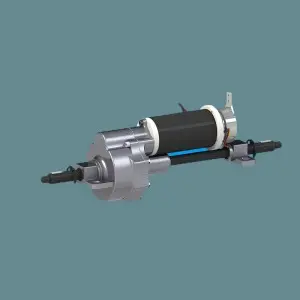The terms “transaxle” and “transmission” are often used interchangeably when talking about a vehicle’s mechanics, but they are actually two different components that play a vital role in the operation of the vehicle. . For anyone interested in the inner workings of a car, it’s crucial to understand the differences between a transaxle and a transmission and the factors that determine their purpose.
Transaxles and transmissions both transfer power from the engine to the wheels, but they do so in different ways. The transmission is an independent unit responsible for changing gear ratios to allow the vehicle to accelerate and maintain speed efficiently. A transaxle, on the other hand, combines the functions of the transmission and differential into one integrated unit. This means that the transaxle not only changes the gear ratio, but also distributes power from the engine to the wheels.
The use of a transaxle or transmission in a vehicle depends on a variety of factors, including the vehicle’s layout, intended use, and performance requirements. Let’s delve into the key deciding factors that influence transaxle and transmission selection.
Vehicle layout:
The layout of a vehicle’s drivetrain plays an important role in determining whether to use a transaxle or transmission. In front-wheel drive vehicles, a transaxle is often used because it integrates the transmission and differential into a single unit, which helps optimize space and weight distribution. Rear-wheel drive vehicles, on the other hand, typically use a transmission connected to a separate differential because this layout allows for more flexibility in positioning components.
Performance requirements:
The vehicle’s performance requirements, such as power output and torque capacity, also influence the choice between a transaxle and transmission. Transaxles are often favored in compact and midsize vehicles where space and weight are key factors because they provide a more compact and lighter solution compared to transmissions and independent differentials. In contrast, high-performance vehicles with greater power and torque needs may opt for a transmission and independent differential to handle the increased load and provide better performance.
Intended use:
The vehicle’s intended use, whether daily commuting, off-road driving, or drag racing, will influence the choice between a transaxle and transmission. Vehicles designed for off-road or rough terrain often benefit from the use of a transaxle, as it provides better ground clearance and improved weight distribution. On the other hand, vehicles built for high-speed performance or towing heavy loads may require the ruggedness and flexibility provided by a transmission and independent differentials.
Cost and Manufacturing Considerations:
Cost and manufacturing considerations also play a role in deciding whether to use a transaxle or transmission in a vehicle. Transaxles are a more integrated and compact solution that are often more cost-effective to produce and install, especially in series production vehicles where efficiency and cost savings are critical. Conversely, transmissions and independent differentials offer greater flexibility in customization and performance tuning, making them a first choice for purpose-built or high-end vehicles.
In summary, vehicle transaxle and transmission selection is influenced by a variety of factors, including the vehicle’s layout, performance requirements, intended use, and cost considerations. While transaxles are common in front-wheel drive vehicles and provide a compact integrated solution, transmissions and independent differentials are favored in rear-wheel drive vehicles and high-performance applications. Ultimately, the decision to use a transaxle or transmission is a carefully considered engineering choice designed to optimize the vehicle’s performance, efficiency and cost-effectiveness.
Post time: Jun-28-2024


